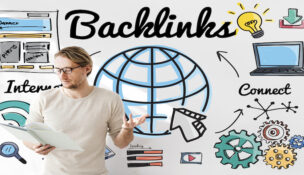Maximizing Efficiency, Minimizing Errors: Harnessing AI and Automation in Your Marketing Strategies
How to leverage AI automation for efficient marketing strategies and personalized engagement.
Indiana Lee //August 15, 2023//


Maximizing Efficiency, Minimizing Errors: Harnessing AI and Automation in Your Marketing Strategies
How to leverage AI automation for efficient marketing strategies and personalized engagement.
Indiana Lee //August 15, 2023//
If used correctly, AI and automation has the potential to upgrade your marketing strategy. The general perception is that most workers are scared of integrating automation into the workplace. However, public opinion on automation actually indicates the opposite — most employees feel more positively than negatively about the topic. This is an advantageous outlook, as you can harness the inevitable powers of automation for the greater marketing good.
In marketing, in particular, automating certain tasks can reduce human error and up your efficiency. Learn how to master marketing automation and how doing so can drive campaign success with the following tips and examples.
READ: AI-Enabled Real Estate — How Automation is Impacting the Housing Market
How to implement marketing automation for optimal results
As with everything in marketing, it pays to be strategic. Your plans for using marketing automation should include a combination of the right techniques, technology and tracking.
Automate menial tasks first
When deciding which tasks to automate first, think about which ones feel the most demanding. Automating marketing chores frees up time for you to focus on more impactful tasks. That’s not to say that the more administrative tasks are unimportant, but they can become repetitive and arduous after a while. Automation tools can help facilitate tasks such as:
- Customer identity resolution: collecting user data from various sources to create a complete picture of that user’s identity.
- Lead scoring and qualification: identifying the most qualified leads based on algorithms and placing leads in categories.
- Predictive analytics: estimating how something will pan out in the future, including customer behavior and market trends.
- Campaign targeting: tailoring marketing campaigns like ads and emails to certain target audiences based on criteria, even segmenting audiences and creating automatic response triggers.
- Social media management: scheduling, posting, and even creating social media posts, tracking analytics like engagement rate across platforms.
READ: Don’t Get Left Behind — Top 8 Social Media Trends for 2023
These tasks can even be enhanced with the use of machine learning and AI to gather data or predict trends that you may not have been able to before. Rather than having to go in and manually email each lead, for example, automation tools can do the grunt work for you. Standardizing processes like this also leads to reduced human error and more successful marketing.
Personalize customer interactions
While these tools open up more time to focus on genuine customer interaction, there are still certain aspects of personalization that can be automated without sacrificing quality. For instance, you can set up personalized emails with the name of the recipient based on user data. You can also use the user information collected for customer identity management to provide relevant content in their inboxes, ads, chatbot messages, recommended sections of your site and more. As long as you have the proper permissions to use this data, this is a great way to use mass personalization to your advantage.
Chatbots are popular for their ability to answer frequently asked questions promptly and without the need to speak to a live agent. Automating this type of customer interaction can save time if their questions or issues are easy to resolve. However, you don’t want to miss any communications. It’s best to also use an automation tool that synthesizes omnichannel messages in one place. This way, you can get a clear picture of customer communication, and customers are less likely to be frustrated with having to repeat themselves.
READ: AI for Customer Service — 5 Easy Ways to Help Your Customers
Colorado-based integration platform, Boomi, is a prime example of intelligent marketing automation. It allows the connection of multiple channels to bring together one clear view of your audience and relevant data. This increases customer satisfaction and brand loyalty due to the ease with which customers can communicate with your brand.
Brandzooka, another Colorado-based software, allows you to run targeted ads across platforms, meeting potential customers where they are. Platforms like this allow you to amalgamate the campaign data all in one place, enhancing your ability to see a holistic view of your marketing efforts.
Prepare for more automation moving forward
AI and automation in the workplace are poised to keep growing and changing over the years. Keeping abreast of the automation trends and facts is tantamount to picking the right techniques for your marketing campaigns now and in the future. Make sure to filter out the automation and AI buzzwords and fluffy trends to get to the tools that allow you to enhance your marketing.
Above all, remember that there are parts of marketing that should never be automated. People expect some level of human interaction when engaging with a brand. This human connection can be unobtrusive, but it should also be an option at all times for those who want it. When implementing automation tools, track your marketing campaign results. Figure out what enhances your marketing and what parts should be run by you instead of software. A mix of automation and a human touch will go a long way.
 Indiana Lee is a writer, reader, and jigsaw puzzle enthusiast from the Pacific Northwest. An expert on business operations, leadership, marketing, and lifestyle, you can connect with her on LinkedIn.
Indiana Lee is a writer, reader, and jigsaw puzzle enthusiast from the Pacific Northwest. An expert on business operations, leadership, marketing, and lifestyle, you can connect with her on LinkedIn.

























